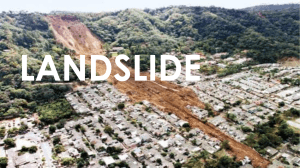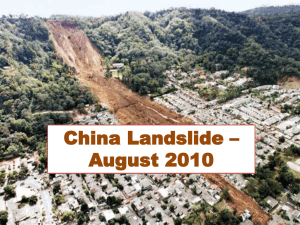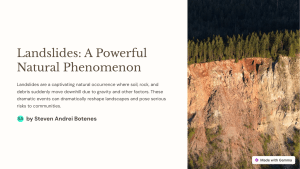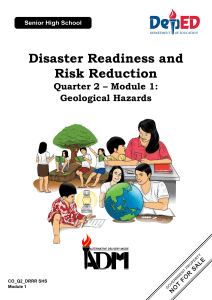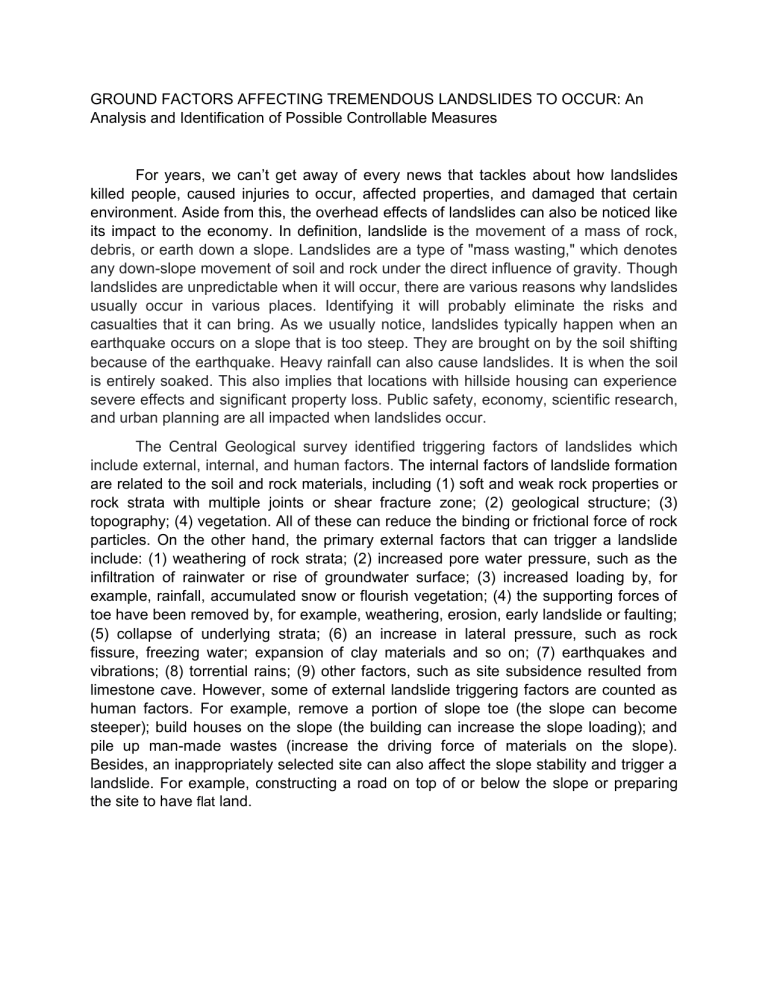
GROUND FACTORS AFFECTING TREMENDOUS LANDSLIDES TO OCCUR: An Analysis and Identification of Possible Controllable Measures For years, we can’t get away of every news that tackles about how landslides killed people, caused injuries to occur, affected properties, and damaged that certain environment. Aside from this, the overhead effects of landslides can also be noticed like its impact to the economy. In definition, landslide is the movement of a mass of rock, debris, or earth down a slope. Landslides are a type of "mass wasting," which denotes any down-slope movement of soil and rock under the direct influence of gravity. Though landslides are unpredictable when it will occur, there are various reasons why landslides usually occur in various places. Identifying it will probably eliminate the risks and casualties that it can bring. As we usually notice, landslides typically happen when an earthquake occurs on a slope that is too steep. They are brought on by the soil shifting because of the earthquake. Heavy rainfall can also cause landslides. It is when the soil is entirely soaked. This also implies that locations with hillside housing can experience severe effects and significant property loss. Public safety, economy, scientific research, and urban planning are all impacted when landslides occur. The Central Geological survey identified triggering factors of landslides which include external, internal, and human factors. The internal factors of landslide formation are related to the soil and rock materials, including (1) soft and weak rock properties or rock strata with multiple joints or shear fracture zone; (2) geological structure; (3) topography; (4) vegetation. All of these can reduce the binding or frictional force of rock particles. On the other hand, the primary external factors that can trigger a landslide include: (1) weathering of rock strata; (2) increased pore water pressure, such as the infiltration of rainwater or rise of groundwater surface; (3) increased loading by, for example, rainfall, accumulated snow or flourish vegetation; (4) the supporting forces of toe have been removed by, for example, weathering, erosion, early landslide or faulting; (5) collapse of underlying strata; (6) an increase in lateral pressure, such as rock fissure, freezing water; expansion of clay materials and so on; (7) earthquakes and vibrations; (8) torrential rains; (9) other factors, such as site subsidence resulted from limestone cave. However, some of external landslide triggering factors are counted as human factors. For example, remove a portion of slope toe (the slope can become steeper); build houses on the slope (the building can increase the slope loading); and pile up man-made wastes (increase the driving force of materials on the slope). Besides, an inappropriately selected site can also affect the slope stability and trigger a landslide. For example, constructing a road on top of or below the slope or preparing the site to have flat land.
